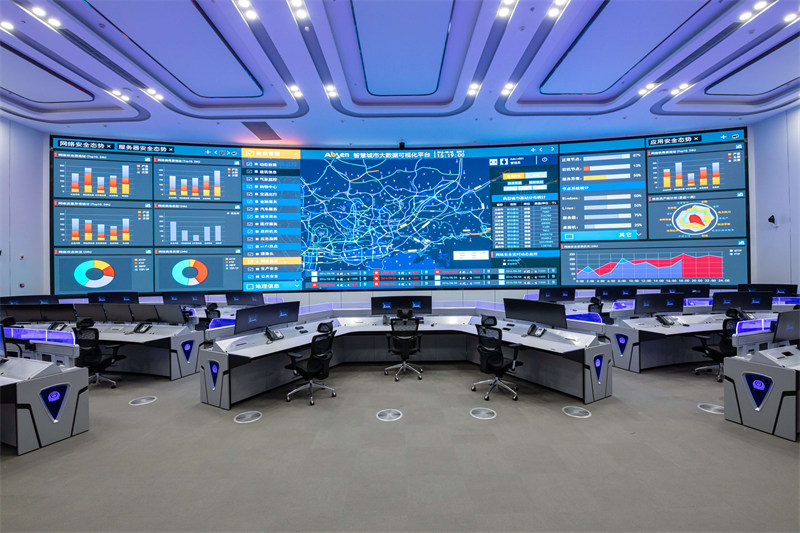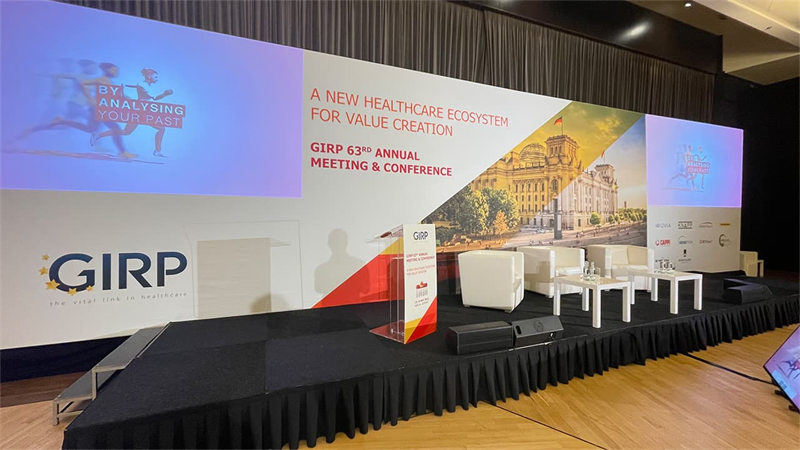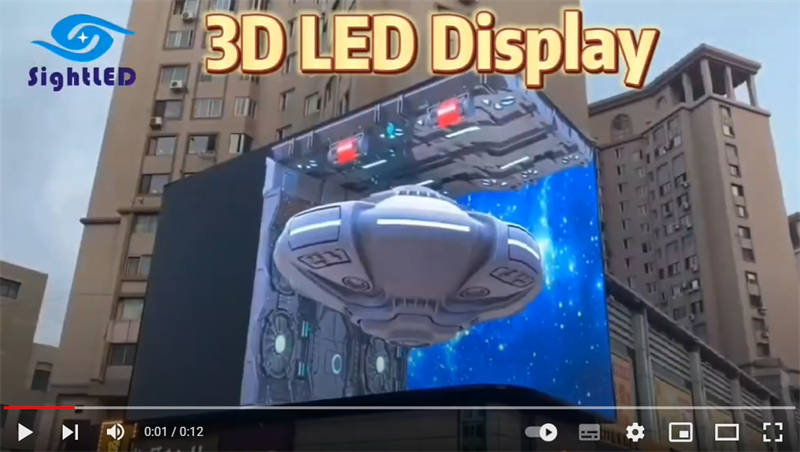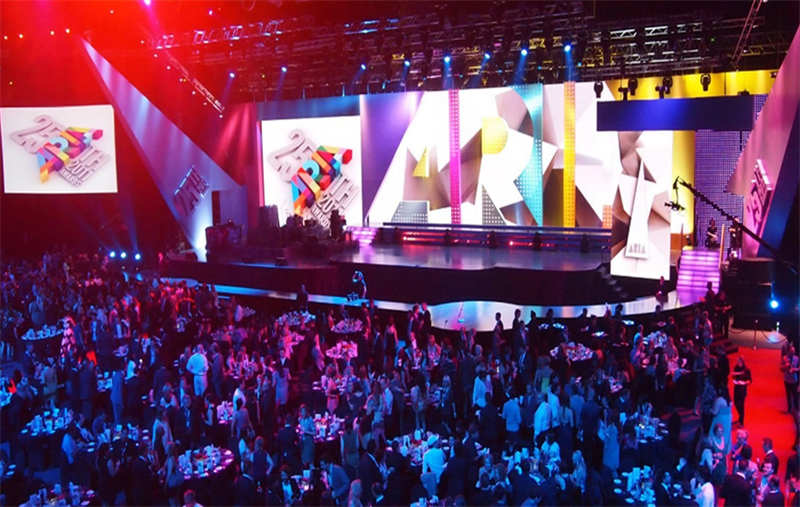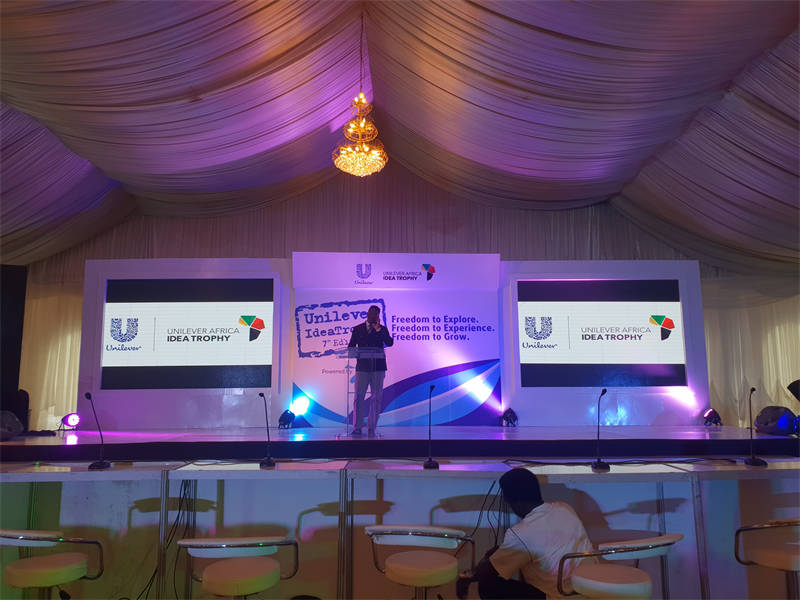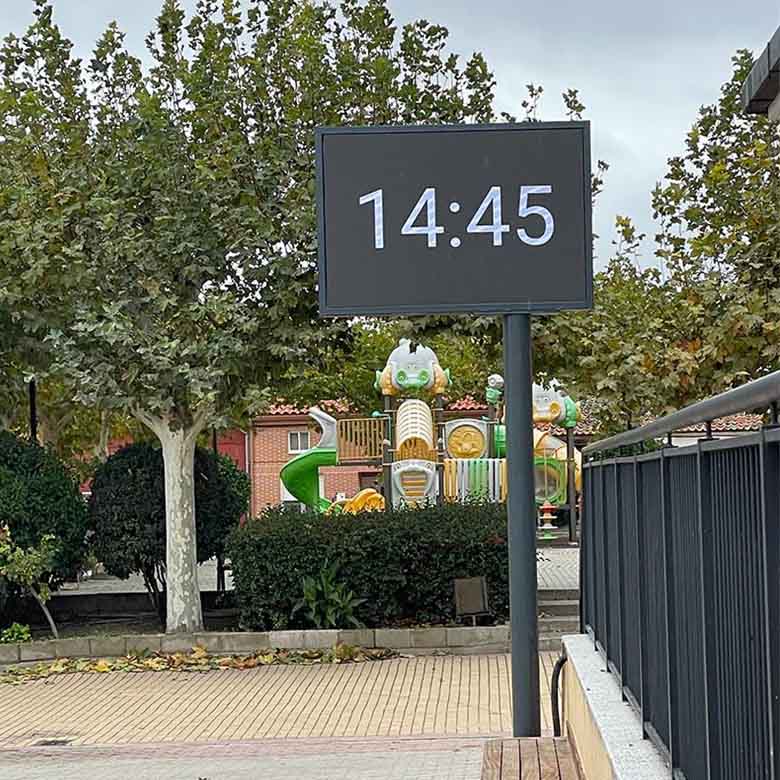Mini/Micro LED display era has arrived, but to realize the popularity of micro-pitch display, yield and cost control is the key to scale mass production. The best way to meet the yield and cost optimization at the same time is to start from the packaging process.
In the case of COB LED technology has occupied the first-mover advantage, MiP in 2023 accelerated into the market, a number of top LED display manufacturers using MiP technology.
But do you know the difference between MIP and LED Technology, what is the market positioning and application prospects of MiP and COB technologies? Which route is preferred by top LED manufacturers?
Table of Contents
ToggleMiP (Micro LED-in-Package) Technology:

MiP technology refers to the encapsulation method in which micro-LEDs are packaged individually or in small groups before being assembled into a display. It can improve the high precision and flexibility in creating high-resolution displays.
Features:
- High Precision
- Better Display Consistency
- Improved Yield
- Enhanced Reliability
- Smaller Chip Size
- Cost Efficiency
- High Brightness and Contrast
Applications:
MiP technology is used in various applications, including smartphones, televisions, large Indoor displays, and other high-resolution display needs.
COB (Chip-on-Board) LED Technology:
COB technology involves mounting multiple LED chips directly onto a substrate to form a single module. These LED chips are then covered with a layer of phosphor or encapsulant to create a single light source.
Features:
- High Light Density
- Improved Thermal Management
- Compact Design
- Reduced Glare
- Simplified Installation
- High Efficiency
- Cost-Effectiveness
- Uniform Illumination
Applications:
COB LEDs are used in a variety of applications, including downlights, streetlights, high bay luminaires, floodlights and spotlights. They are also popular in high-end residential and commercial LED display solutions due to their uniform light output and efficiency.
Differences and Advantages of MiP and COB LED Technologies
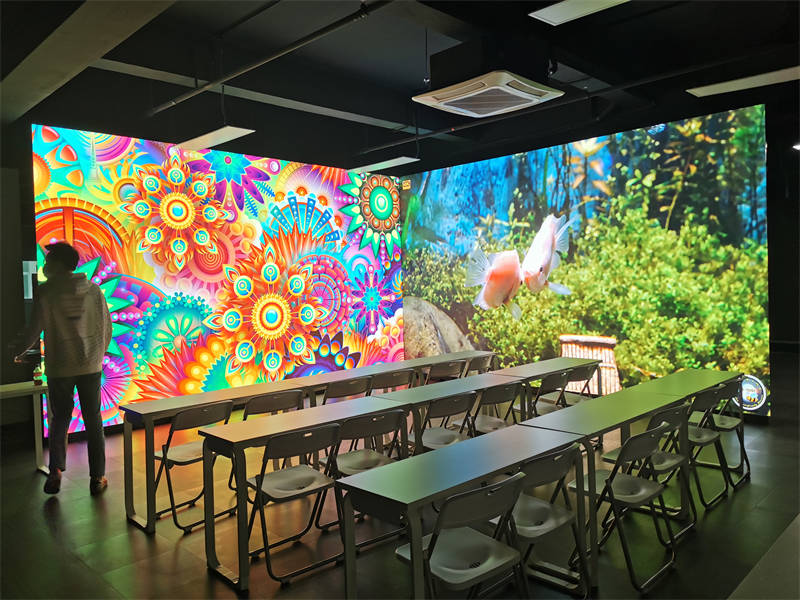
COB and MIP have their own differences and advantages and disadvantages in terms of manufacturability, usage scenarios and display performance:
LED packageing:MIP technology is a chip-level packaging technology . It adopts the idea of turning the whole into zero, packaging a whole panel separately, and solving the problem of high yield control difficulty in large area by controlling the yield of small area.
Manufacturability:MIP (Mini LED in package) can reuse SMD production equipment, less heavy asset investment; MIP (Micro LED in package) may be able to partially reuse SMD existing production equipment;
COB LED packaging and display technology, reduce part of the manufacturing process, high production efficiency; and MiP is the same as the traditional SMD, the first out of the package, and then do the patch, two manufacturing links.
But MiP can be compatible with the current SMD surface mount equipment, transfer cost is low; able to single chip adapted to different substrates, different pixel pitch applications. COB (Chip on Board) is required to invest in a separate production line, requiring a larger capital investment.
Application: COB and MIP (Mini LED in package) is mainly used for large-size display, such as control rooms, large conference rooms, exhibitions and other indoor scenes; MIP (Micro LED in package) chip size is getting smaller, Micro LED will be mainly used in small-size displays, such as wearable devices, Micro LED TV, car display and other scenes.
MIP: chip-level packaging, single-chip packaging can achieve mixed crystal, spectral, color separation, the current minimum can do P 0.9 pixel pitch.
COB: chip-on-board packaging, higher brightness, better heat dissipation, good reliability, can do P 0.4 and the following Micro-level pitch.
Display performance: COB has realized high brightness, good black consistency, high contrast characteristics, can well present HDR effect, display stability and so on than traditional SMD products have outstanding advantages, MIP (Mini LED in Package) display performance and COB is comparable to the consistency of the large viewing angle is better than the COB, such as do not do the surface of the integrated package processing, display stability is not as good as the COB.
MIP (Micro LED in package) is the current Micro LED relatively good mass production of technology routes, can realize ultra-high resolution display, can realize P0.4mm below the display products, the drive scheme of the accuracy requirements are higher, so in the ultra-small pitch display will be better.
Production process: MIP still needs to encapsulate individual lamp bead devices and then transfer them to the lamp board through SMT or solid crystal. While COB technology is a simpler process that involves placing multiple LED chips directly on a printed circuit board (PCB) and then covering them with a phosphor layer.
MIP accelerates the maturity and entry into the market at a new moment, from the traditional LED direct display products, the packaging structure mainly includes SMD, IMD and COB three technologies. Among them, as the most mature technology, SMD still occupies an important position in the era of micro-pitch .
Cost: COB technology in P1.2 LED display and SMD has been evenly matched to P0.9, COB comprehensive application cost than SMD has taken a clear advantage of the COB to eliminate the cost of bracket at the same time, the chip can be more small, 02 * 06mil (50 * 150μm), 02 * 05mil (50 * 125μm) and more miniaturized!
Chip gradually launched in mass production, can be in the existing premise of the same light effect chip costs continue to dip, the current mainstream manufacturers of straight through rate of 40% -60%, to improve production efficiency at the same time, the cost is expected to be further optimized; as a latecomer to the MiP, fundamentally a blend of COB technology and SMD technology and innovation, but the cost of strong dependence on the scale of the support, the current is still in the high position and manufacturing yields Low.
Efficiency: COB reduces LED bump, static electricity, moisture and other bad. Pixel pitch can be up to 0.5mm or less, good display effect, high brightness, high contrast, large viewing angle, weakened moiré. High mechanical properties and weather resistance. Driving mode is more flexible compared to discrete devices, and virtual pixel arrangement can be realized.
Flexibility: MIP can complete the color separation after encapsulating a separate device, and the color consistency of the product display will be greatly improved compared with COB products. Especially when viewed from a large angle, it solves the problem of color deviation of COB products. In addition, compared with COB products, MIP products can be localized maintenance, which is also very important.
Display effect:MiP LED package, the device can be sorted and mixed Bin, display consistency; COB module with a large viewing angle, anti-collision and compression, good heat dissipation, low rate of bad spots, but can not be single-pixel spectrophotometric screening, can only be controlled from the source of the chip.bCOB ink consistency, intelligent correction and detection of repair and other aspects of the challenge still exists.
Prospects: MIP and COB technology will continue to develop in the future, but each has its own focus; MIP technology may have new breakthroughs in cost reduction. MIP technology may make new breakthroughs in cost reduction, while COB technology still has much room for improvement in terms of heat dissipation performance and irradiance. Both sides will continue to deepen in the application areas in which they specialize.
LED product line: MIP is to increase the GAP pitch of the package body by adding an encapsulation process in order to realize the application of smaller LED chips and higher yield in the back-end.
MIP is a new product technology, the production process requires a huge amount of transfer program. Currently the technology is still in the stage of continuous improvement, MIP makes the industrial chain division of labor, tends to the traditional SMD products. The wafer process is completed by the wafer factory, and the MIP encapsulation process is completed by the encapsulation factory. Solid crystal and SMT are completed by LED screen factory.
MIP solves the LED wafer miniaturization (below 2*4) test sorting, PCB\BT carrier board line width line spacing limitations caused by the pixel miniaturization (below P0.5). Reduced LED wafer cost by utilizing smaller LED wafer size.
MIP devices above 0404 are compatible with the original SMT mounting equipment of the screen factory, most of the manufacturers of 0404 and the following sizes still use blue film shipment, which requires solid crystal machine to hit the pieces. MIP transfer efficiency is high, transferring a single pixel at a time, which is equivalent to 3 times of the efficiency of the COB transfer wafer. Easy to split BIN, mixing lights, good display uniformity. Large black area and high contrast.
However, its yield requirements for the front section of the package is high, compared with the SMD increased process (screen manufacturers need to transfer the equipment investment and secondary potting) has also increased the corresponding cost.MIP if you meet the comprehensive cost (materials and labor costs) lower conditions, you can compete with COB. In addition, the RGB stacked MIP, but also for the development of small-pitch devices to provide a new direction and ideas.
COB after nearly a few years of exploration and efforts, in the process and cost are the most concise and efficient program, the current technology is also more mature, in the ascending stage. COB product industry chain division of labor, wafer factory to provide wafers, LED screen factory and LED packaging plant merger, at the same time, complete the packaging, patch processing process, eliminating the need for LED lamp testing sub-BIN, packaging and transportation, inspection and other links, to enhance the overall efficiency.
| Feature | MiP Technology | COB Technology |
|---|---|---|
| Miniaturization | Smaller package sizes, maintains brightness and color consistency | Standard miniaturization path, higher efficiency |
| Compatibility | Seamlessly extends existing electronic structures | Simplified processes, higher efficiency |
| Light Mixing | Excellent light mixing, high uniformity, no Mura effect | Good light mixing |
| Testing and Repairs | Reduces testing difficulty, eliminates costly repairs | Requires advancements for improved yield |
| LED Chip Size | Handles chips smaller than 60μm, smallest dot pitch | Standard chip sizes |
| Performance | Outperforms COB in chip size, electrical connection, contrast, repairability, flatness, and light mixing | Ultra-high contrast, wide viewing angle, excellent stability, and heat dissipation |
| Mainstream Technology | Not specified | Mainstream for Mini LED, pathway to Micro LED |
| Future Potential | Avoids significant equipment investment but higher costs to screen manufacturers | Enhanced by advancements in mass transfer equipment, substrate precision, and Micro chips |
| Challenges and Trade-offs | Higher costs to screen manufacturers | More efficient and cost-effective but needs key technological advancements |
Leading LED Display Manufacturer Talks MIP and COB LED Technology
Differences and Advantages of MiP and COB Technologies
Unilumin technology: Many companies call their technology MiP, which stands for Mini in Package. However, true micro-in-package production is rare. The main advantage of MiP is miniaturization. It achieves smaller package sizes while maintaining brightness and color consistency. This technology extends the current electronic structure, allowing seamless product replacement and significant performance improvements.
Leyard Group: MiP has many advantages. It offers excellent light mixing, high uniformity and no Mura effect. It reduces testing difficulties and eliminates costly repairs. MiP is ideal for high volume micro LED production. It overcomes key issues such as yield, color consistency, uniformity, detection, repair and cost. In addition, MiP is highly compatible with existing LED manufacturing processes.
Compare MiP and COB:
In terms of LED chip size, COB can typically package chips larger than 100μm, while MiP can handle chips smaller than 60μm. MiP achieves the smallest dot pitch, followed by COB. Overall, MiP outperforms COB in various aspects, including chip size, electrical interconnection, contrast, repairability, flatness, and light mixing.
Xida Electronic Technology: MiP technology is divided into package level and chip level. Package-level MiP, represented by companies such as Jingtai and Lijing, extends SMT (surface mount technology). Chip-level MiP, led by brands such as Seoul Semiconductor and Samsung, changes the RGB chip layout. However, chip-level MiP faces high cost and manufacturing challenges. COB is expected to remain the mainstream technology for mini LED and is the path to micro LED.
Absen: MiP and COB are the leading technologies for mini/micro LED displays. MiP uses independent LED packaging, while COB integrates chip-level packaging. MiP combines micro-LED and discrete devices, improving yield and cost-effectiveness. It offers high quality, reliability and compatibility, improving display consistency.
SightLED: MiP is an interim solution to the low yield problem of COB. It adds an additional packaging step to increase yield, but also increases cost. For display manufacturers, MiP avoids significant equipment investment, but passes higher costs downstream. COB simplifies processes, improves efficiency and reduces costs, making it ideal for micro-pitch and high pixel density displays.
In the future, the yield and cost advantages of COB will become even greater with advances in mass transfer equipment, substrate precision, and microchips.
Market positioning and application prospects of MiP and COB technologies in the commercial development process
Unilumin technology: The real value of MiP lies in the miniaturization of processes and the consolidation of the upstream supply chain. This significantly increases the input-output ratio. MiP can do everything COB can do. Its strong technical continuity means it can quickly replace current industry standards. MiP integrates seamlessly into various applications and solves SMT problems. MiP and COB are working together to replace SMD technology. The market will ultimately determine the mainstream choice.
Leyard Group: Cost is always critical to the adoption of new technologies. The competition between COB and MiP is focused on reducing the cost of micro LEDs while improving quality. MiP uses mass transfer equipment, making smaller chips more efficient and cost effective. This trend is expected to continue. MiP offers better performance in color uniformity and repairability, in line with the commercialization of micro LEDs. Its high performance and compatibility make it popular, with rapid product iteration and cost reduction potential. As LED display technology advances into the Micro LED era, MiP has unique advantages in mass production, small pitch and large size applications.
Xida Electronics: The choice between MiP and COB depends on each company’s resources. Before the cost of COB reaches an optimal level, MiP has market opportunities. However, with the entry of major players such as Shenzhen MTC, this chance may be shortened. Uncertainty in project delivery and after-sales service means that market applications will be adjusted based on specific projects, hindering large-scale adoption.
Voury: In the short term, COB dominates the mini-LED field with excellent display effects, high flatness and consistency. In the long term, MiP will lead in micro LED applications with its superior display, mature processes, cost advantages, high brightness, low power consumption, strong compatibility, and improved display consistency.
SightLED: MiP and COB target the same small pixel pitch indoor market. The key difference is that MiP can be supplied as individual LED chips, reaching more customers. Future market applications will depend on cost. MiP may have an advantage below P0.9, but above P1.2, COB’s yield rate offers better cost efficiency. COB’s simplified structure and process make it the optimal cost solution under good yield conditions.
Kinglight LED Packaging: COB products have been around for years, but haven’t fully taken off due to issues such as display quality, color uniformity, cost and yield. MiP addresses many of COB’s problems, offering better display, color uniformity, higher yield and lower cost. We believe MiP is an important technology for the future.
Which technology route does your company prefer and why?
Unilumin Technology: Unilumin Technology pursues both MiP and COB technologies. This strategy helps us meet different customer needs and advance our industry. MiP and COB each have their own advantages. They complement each other and do not compete. We want to offer diverse solutions to our users by using both routes.
Leyard Group: We believe that MiP is the key technology route. MiP has more advantages than COB. It is better for large-scale production of micro LEDs. MiP is also more accepted by display manufacturers. It solves key issues such as yield, color consistency, uniformity, repair, and cost in small-pitch, large-size displays. Our MiP packaging is becoming more advanced. We have enhanced our Nin1 MiP solution to support more pitches and improved our process and yield. We also use laser mass transfer and welding to achieve 99.999% accuracy, which makes our products more reliable.
Xida Electronics Technology: As a company under the Chinese Academy of Sciences, we are committed to the COB technology road. We focus on innovation in technology, process, equipment and talent. We have plans from mini LED to micro LED. We are confident that we can compete globally and win respect and trust for China’s LED technology and products.
SightLED: We are pursuing both COB and MiP technology routes. We believe they will merge in the future, especially in Micro LED. As a professional LED display manufacturer, our goal is to meet customers’ needs and achieve win-win cooperation. We keep all technology options open to be the best ODM/OEM partner for our customers.
Kinglight LED: We mainly prefer the MiP way. COB has many problems that MiP can solve. COB has low transfer accuracy, which causes chips to rotate, flip, or tilt. MiP has higher transfer accuracy. COB also has poor display consistency and color uniformity. MiP can test the brightness and wavelength of each chip, ensuring better display consistency. MiP can also mix all LEDs evenly before placing them on modules, improving color uniformity. MiP uses smaller chips that are less expensive than COB’s larger chips. MiP also helps downstream customers reduce costs. MiP’s high precision and yield reduce repair costs, making it a better choice than COB.
Voury: MIP and COB expertise of the specific differences. MIP is the whole of the technical ideas, through the separation of preferred and then welded to the PCB, more than the SMD technology route is more separated, the advantage of this route is that the chip is smaller, lower loss, the opportunity to do lower cost, essentially did not leave the SMD technology route; COB route is integrated, simplified, holistic route, its advantage is that it can make the product more stable, wider color gamut, more energy efficient, more environmentally friendly, based on the need to select the chip and post-correction, the cost of less than the MIP route.
Conclusion:
MIP belongs to the integrated packaging technology, which is characterized by making circuit wiring directly on the BT parts, suitable for small chip packaging, suitable for smaller pixel pitch. COB belongs to the large chip level packaging technology, the process is more complex. However, the heat dissipation performance is better, and it is also convenient for single-point maintenance.
MIP technology has a simple structure, you can develop some novel shape, but not high thermal requirements of indoor display products; COB technology due to excellent heat dissipation, more suitable for the need of super energy-saving display projects, can provide higher stability and reliability.
In the actual application, we will choose the appropriate packaging technology according to the application environment and product requirements. If it is a small-pitch display with high heat generation and stability requirements, such as intelligent command center and automotive display, we will give priority to COB technology. For more small-pitch display requirements, we will choose MIP technology.
At present, COB mini-LED stage has realized more mature process and yield, with the huge amount of transfer, substrate precision, drive and other issues to solve, and ultimately realize micro-LED.

